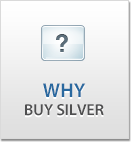An investment in silver can be extremely lucrative. Silver is used in many applications of everyday life- in jewelry, computers, electronics, electrical conductors, and so many more. In fact, it is hard to imagine a world without silver.
Even though it is a precious metal, it is a brilliant investment to make because there will always be an interest in and demand for both buying and selling silver. For those looking into investing in silver with the possibility of a great return in a short amount of time, futures trading is an option to consider.
The ‘Futures’ Arrangement
Futures trading in silver involves an agreement between two parties- a buyer and a seller- to make a trade on a specific commodity, silver in this case, at an agreed upon price and time in the future.
The principle of futures trading is based on speculation- using the relative known trends of silver to make an educated guess on how silver will perform in the future, and make an agreement with a seller or buyer from there. Although the agreement is based on the physical precious metal itself, the contract can be offset in cash by either the buyer or seller at any time based on how silver is performing at any given time and much money they stand to make or lose.
Futures trade on major stock exchanges. In the United States, the primary silver trading exchange is the Commodity Exchange of the New York Mercantile Exchange, COMEX. When investing in silver using futures, you do not have to actually own the physical silver. Instead, you own shares of silver, and only pay an upfront payment. When the date of your futures contract arrives, you pay the margin difference. So, it is possible to make a great deal of money with only a minimum initial payment.
Future contracts are done in increments of lot sizes. Rather than being able to choose any number of shares to trade as in a traditional stock market, you are committed to trading in lot sizes. Though you have the ability to receive different quotes, your trading ability is limited. For silver traded on the New York Mercantile Exchange, each lot size is 5000 troy ounces of 99.9% pure silver.
Risk and Return
Futures trading provides a huge amount of leverage and profitability. What most investors hope to do is buy into silver when the price is relatively low but shows promise of rising, and then sell their shares when the price is high and looks likely to fall. If you’re well versed in trading and able to predict market trends, you could enjoy a maximum profit at minimum cost to you in a short period of time. Another advantage of futures trading is that you can buy silver at spot price and still enjoy owning a valuable amount of silver.
The disadvantage of futures trading is that the risk is extremely high. It is all based on speculation, and difficult to predict with absolute certainty. If there is a market collapse, you could potentially lose your entire investment.
Conversely, the value of silver could skyrocket in a day, earning you a fortune. No one can accurately predict, and it is all a guessing game. It can still net you a profit if you’re intelligent about your investment. First time investors should shy away from doing futures trading themselves if they have no experience with this investment.





